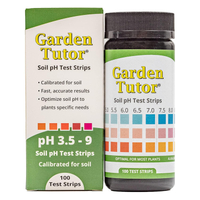Why are my Gardenia leaves turning yellow? What it means and how to fix it
Why it’s happening and what to do about it
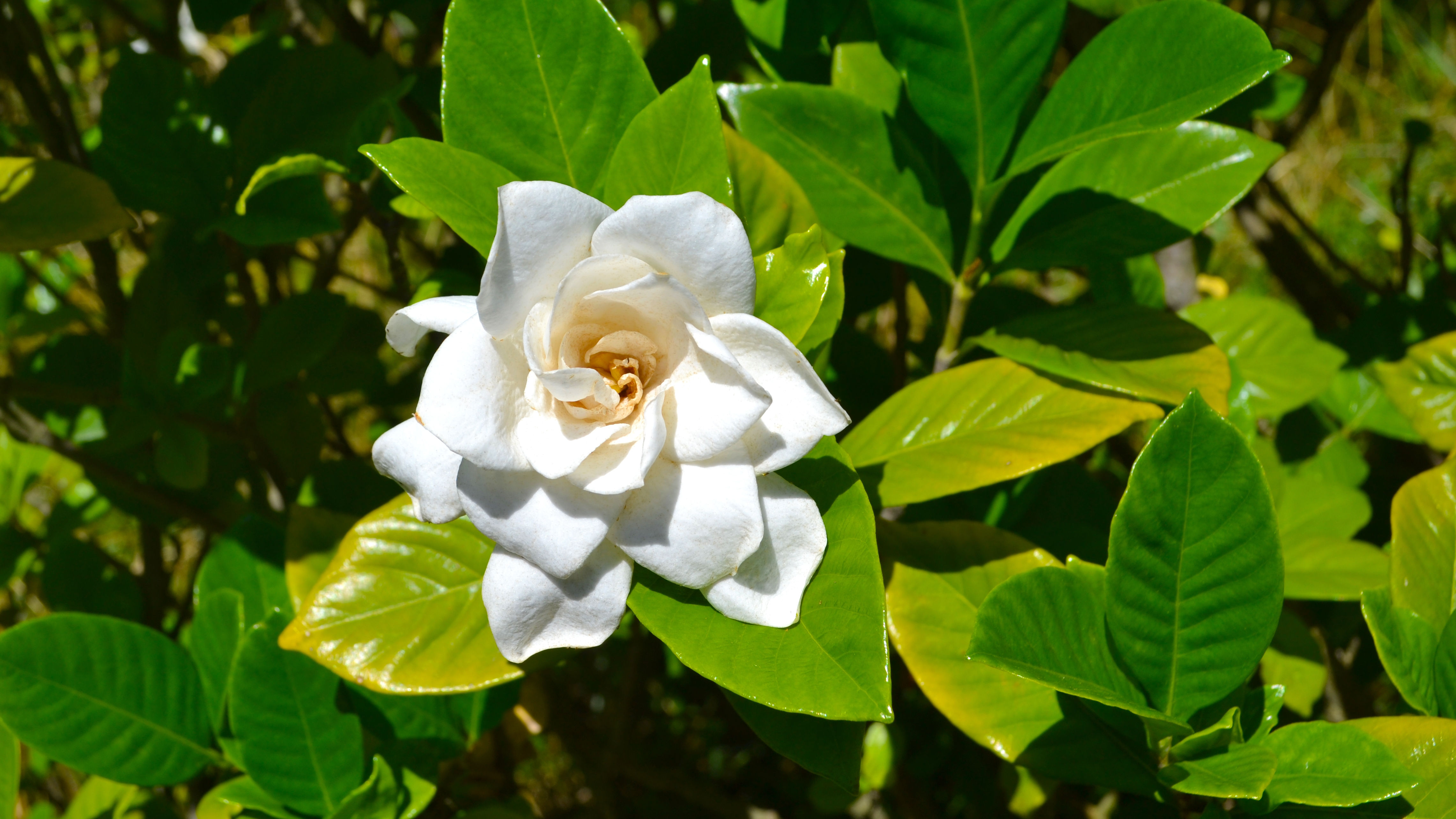
Gardenias are a popular plant for gardens around the world thanks to their fragrant white flowers and glossy, dark leaves. While they’re an attractive staple in the garden year-round due to their evergreen foliage, their real time to shine comes during summer.
When happy, these plants begin to bloom in spring and continue to flower throughout the summer months — but they can be surprisingly temperamental and fussy. Native to subtropical climates, such as southern Asia, Oceania and parts of Africa, gardenias need just the right amount of sun, water and nutrients to thrive, and this can depend on what gardening zone you are in.
Without the right conditions, your plant will begin to fade, may not produce its usual flowers and will ultimately die if left untreated. One of the most clear signs that your gardenia isn’t getting exactly what it needs is its leaves turning yellow. Usually a distinctive dark green color, yellowing leaves should be quite obvious to spot, which should allow you to act quickly. Depending on the cause, you may be able to fix the problem and enjoy your gardenia for years to come.
Why are my gardenia leaves turning yellow?
If you spot a few yellow leaves in the early spring, this is nothing to worry about
Gardenias are perennials, meaning they will bloom year after year if well tended. This means that there will be some natural aging, yellowing and dying of old leaves, to be replaced by younger foliage.
If you spot a few yellow leaves in the early spring, this is nothing to worry about — your gardenia is simply clearing the way for fresh growth. However, if you’re noticing a significant amount of yellow leaves or the yellowing is occurring during the rest of the year, then this is likely a sign that your gardenia isn’t getting the right amount of sun, water or nutrients.
1. Over- or under-watering
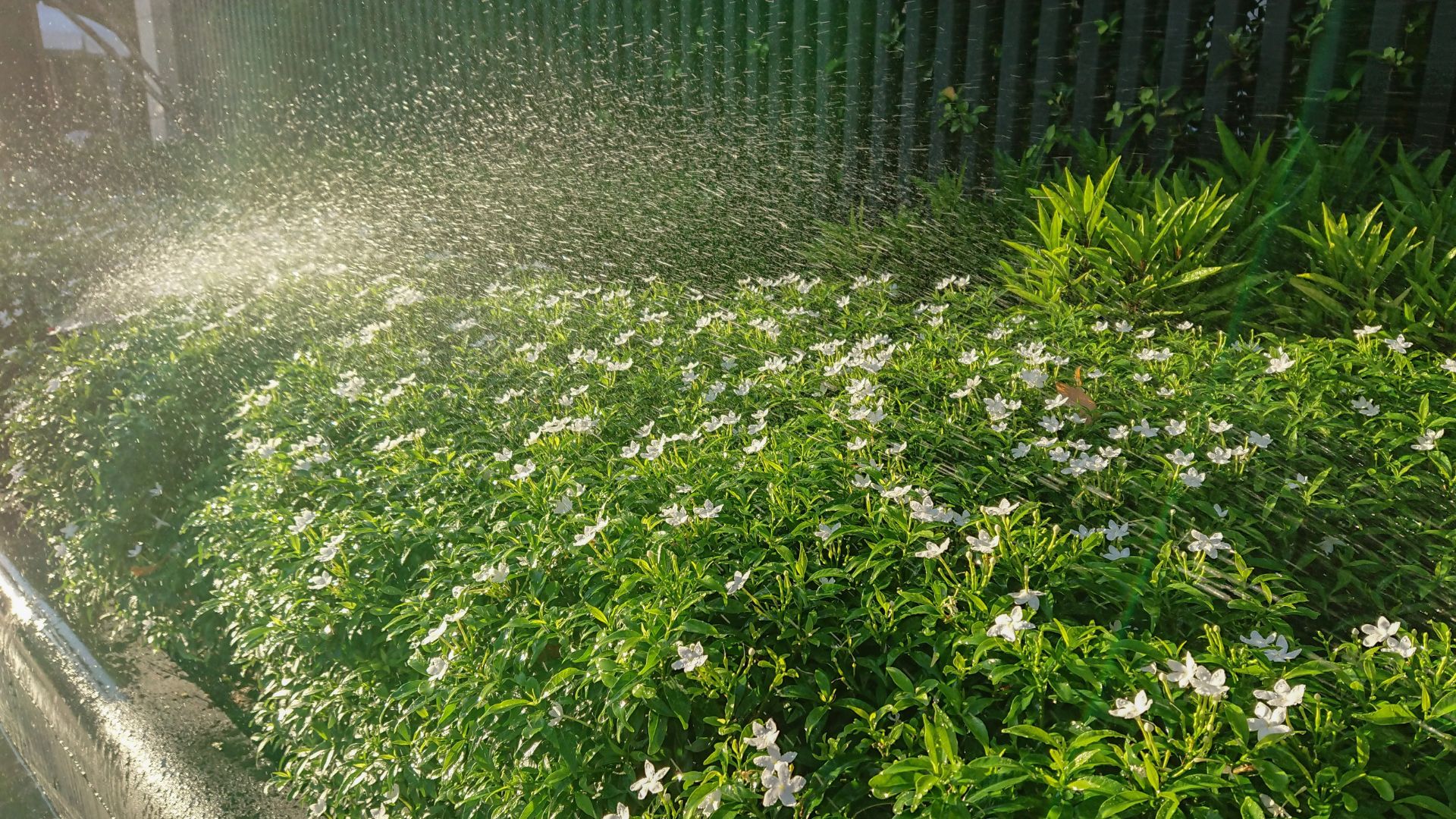
As a subtropical plant, gardenias do like water – but only so much of it. On average, a gardenia should receive about an inch of water per week, whether that’s from rainfall or manual watering. While a single rainy week shouldn’t cause much long term damage, excessively rainy weather or an overzealous watering schedule can lead to root rot. Root rot prohibits the roots (and therefore the leaves) from absorbing sufficient water and nutrients, which limits growth and overall health. Compacted soil can also prohibit drainage, which leaves the soil saturated. The first leaves to be affected will be the lower leaves nearest the roots. One way to determine if overwatering is the problem is to check the soil; it should be damp but not soaking wet.
On the flipside, underwatering can deprive the gardenia of an important resource. If you’re in the middle of a drought or have forgotten to keep the roots sufficiently moist, then your plant may struggle. In this case, it will be the leaves furthest from the roots that suffer the most, as water will need to travel further to reach them. If it’s the peripheral leaves that are yellowing, the cause could be underwatering.
Sign up to get the BEST of Tom's Guide direct to your inbox.
Get instant access to breaking news, the hottest reviews, great deals and helpful tips.
What to do
If you think the issue is over- or under-watering, then you need to adjust your watering schedule accordingly and see if that halts the yellowing or improves the condition of the leaves.
2. Root diseases
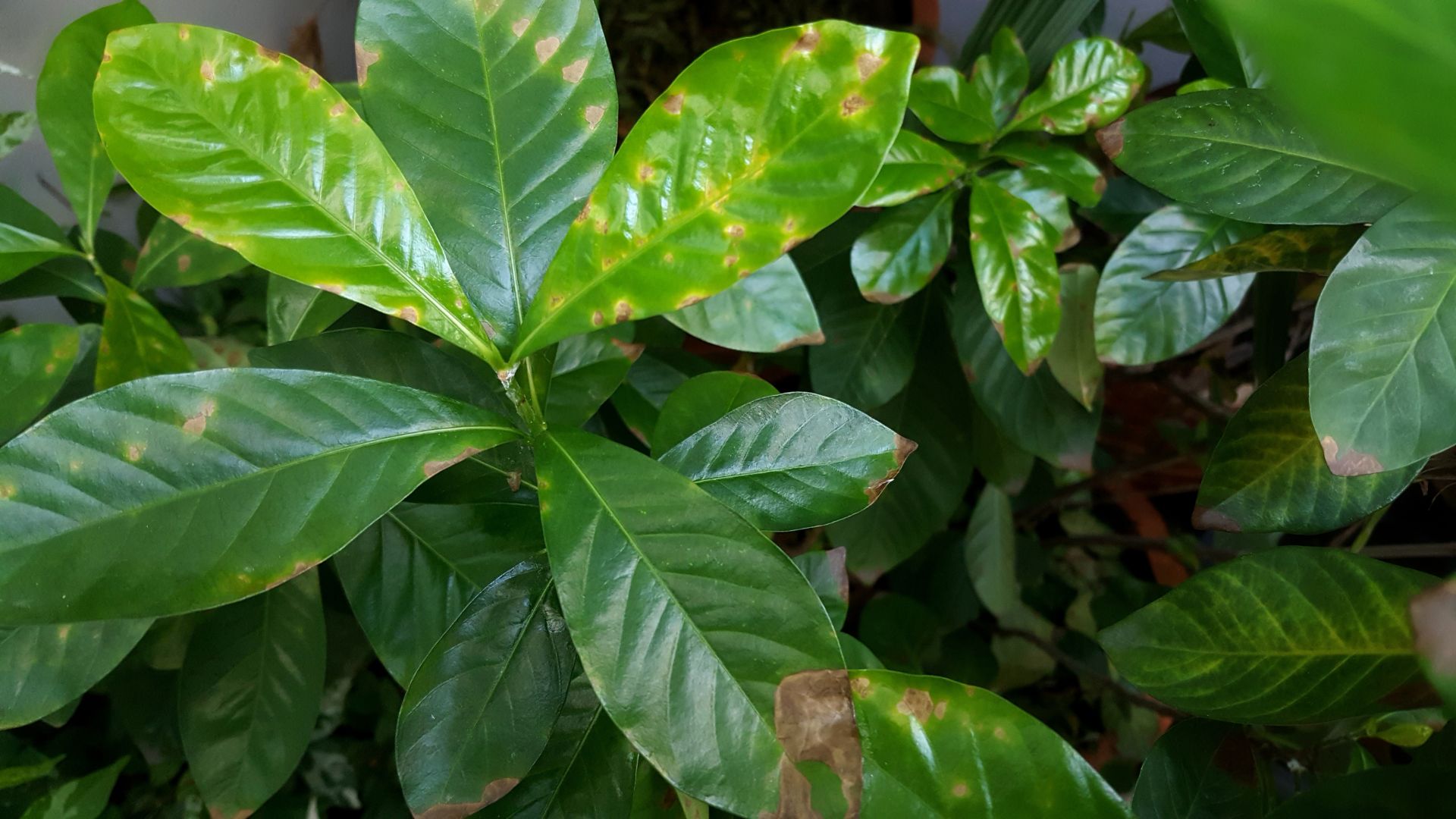
Root rot is often caused by overwatering, because the excess water creates a breeding ground for fungus and other diseases. Root rot turns healthy white or tan roots into mushy brown ones that struggle to absorb water and nutrients, so they can’t feed the rest of the plant.
These fungal diseases tend to prefer cooler weather but could strike at any time of the year. The most common pathogens include Phytophthora and Pythium. While the initial damage will occur to the bottom leaves, turning them yellow, this will eventually spread up through the plant if left untreated.
What to do
If you suspect root rot to be the problem, you should dig up the plant and trim away all the diseased parts of the roots, before replanting in fresh soil. Hopefully your gardenia will be able to survive this transplanting, if the root rot is not too advanced.
3. Nutrient deficiency
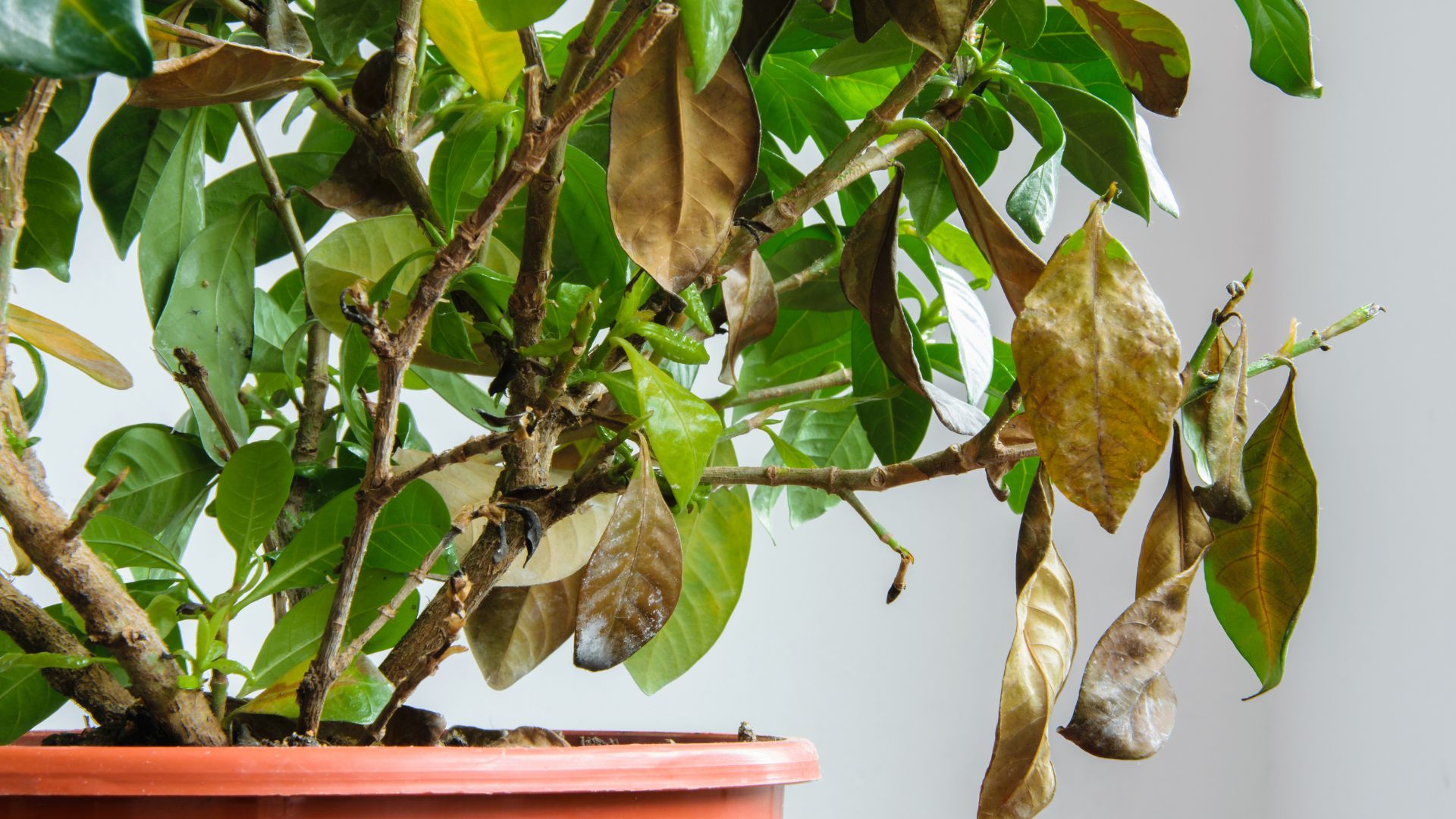
Just as plants require sunlight and water to grow, so too do they need key nutrients. The most important of these for gardenias are iron, copper, magnesium, nitrogen, potassium and phosphorus. These occur naturally in soil but if your gardenia’s leaves are yellowing, it may not be getting the volume of nutrients it needs – especially magnesium and iron.
This could be because the soil is too diluted from water, too high or low in pH, or depleted from overuse. Without these key minerals, your gardenia won’t be able to grow properly. A lack of iron will restrict the production of chlorophyll, which is needed for photosynthesis, while nitrogen is needed for healthy leaf growth. This is why a deficit will lead to yellowing leaves.
What to do
If you think the issue is nutrient deficiency, apply a fertilizer or organic matter directly to the soil, ideally one that is rich in iron and magnesium. The best time to do so is in spring and early summer, which is the prime growing season.
4. Alkaline soil
Gardenias prefer slightly acidic soil that has a pH between 5 and 6.5
Gardenias prefer slightly acidic soil that has a pH between 5 and 6.5. This low level of acidity creates the right conditions for minerals to break down into absorbable form, so that the roots can take up important nutrients.
If the soil becomes alkaline, these minerals will be unusable for the plant and it will suffer from deficiency — which causes yellow leaves. You can check the pH of your soil with an at-home testing strip, which should let you know if your soil falls into the appropriate range.
What to do
For alkaline soil, adjust the pH of the soil by adding elemental sulfur, which won’t damage your gardenia. This needs to be done regularly to ensure the soil’s pH changes more permanently — otherwise it will just be a temporary fix.
Garden Tutor Soil pH Test Kit: $12.98 at Amazon
These soil pH tester strips offer results in 60 seconds and can accurately gauge the level of acidity of your soil. This $13 set includes 100 tests, meaning you can continually check your soil to see if it changes after treatment.
5. Too much or too little sun
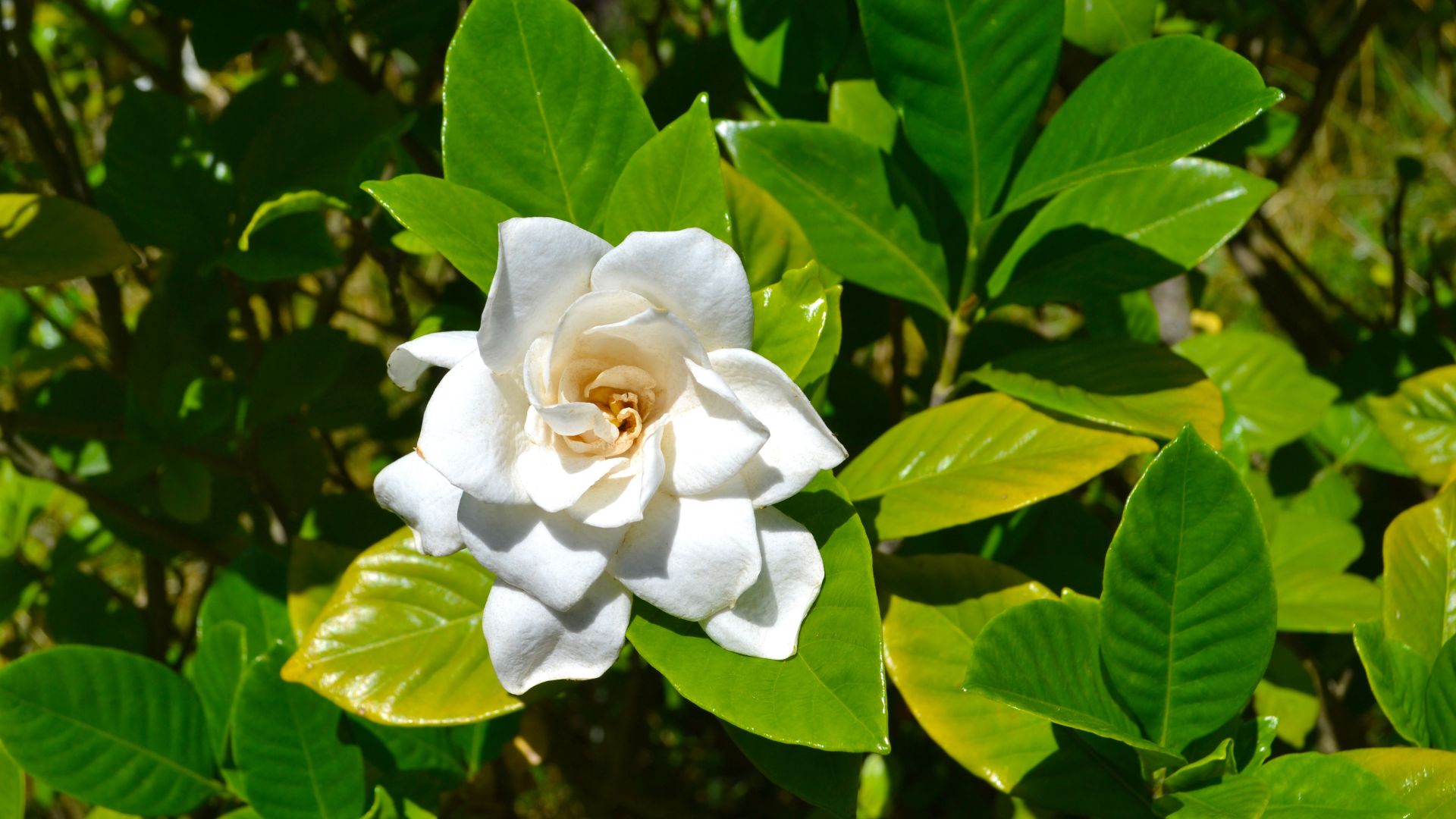
As with all plants, gardenias produce chlorophyll (which keeps their leaves green) through photosynthesis. While there are some plants that thrive in the shade, this requires substantial sun exposure of at least six hours a day during peak growth season, to achieve enough chlorophyll for the dark green leaf color that gardenias are known for. Without sufficient sunlight, the leaves will be stuck in a yellow or pale green color.
If your plant is getting enough sun but not producing enough chlorophyll, this could be because of an iron deficiency as iron is also needed for chlorophyll production. On the flip side, if the leaves are on the browner side of yellow, this could be due to burns from excessive sun exposure. This is most likely to occur if your plant receives a lot of direct sunlight during the afternoon, when the rays are more intense.
How to treat
If the problem is too much or too little sunlight, then you will want to move the plant into a more temperate area or create shade around the plant.
Why are yellow leaves a problem?
Think of yellow leaves as the symptom of a larger disease
Yellow leaves are unsightly, especially in contrast to the dark green color of healthy gardenia leaves, but they can also be a sign that something serious is wrong. Leaves usually turn yellow before they die, which may be a normal part of the plant’s life cycle – or because the plant itself is dying. If the yellow leaves are small in number or mostly occurring in early spring, this is a sign that your plant is simply regenerating ahead of summer blooming. However, yellow leaves at other times of year are a sign that your plant is suffering.
Think of yellow leaves as the symptom of a larger disease. If left untreated, the problem will likely kill the entire plant. Depending on the cause, you have several courses of action you might want to pursue. The first step is to understand why your particular gardenia’s leaves are yellowing, so that you can target the problem at the source and return your plant to good health.
See also: 5 mistakes to avoid when growing hydrangeas.
Should you cut off yellow leaves?
Yellowing leaves are already dying, which means they will eventually fall from the branch on their own. While you can cut off the yellow leaves yourself, this isn’t necessary and could potentially stress out your plant further. The only time when it is recommended to take action is if the yellowing is spreading from the leaf to the gardenia’s stems and branches. This can help to halt the yellowing, although you will still need to treat the root cause.
More from Tom's Guide
Madeleine Streets is a writer and content manager based in New York City. She covers an eclectic mix of lifestyle, technology, finance and health and has been published in Tom's Guide, Women's Wear Daily, SELF, Observer, Footwear News and others. Originally from London, Madeleine has a penchant for tea, baking and moody weather. When she’s not writing, you can find her exploring the city’s bookstores, hunting down new restaurants, fostering cats and cheering on Arsenal FC.
